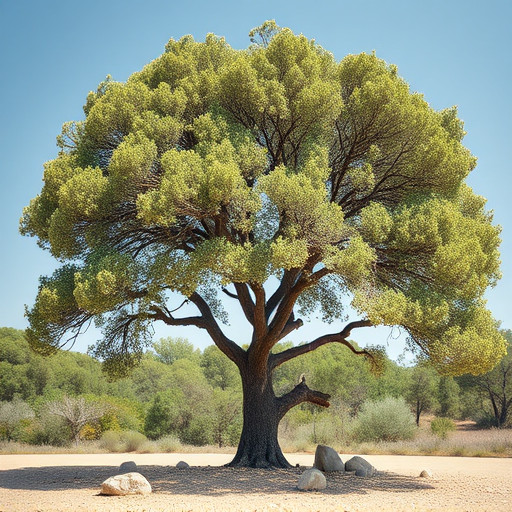The California Acacia is a beautiful and adaptable native tree known for its deep-furrowed bark, aromatic leaves, and golden flowers. It thrives in diverse climates due to its unique adaptations, such as a deep taproot system and broad canopy, making it crucial for local ecosystems. In the digital era, embracing technology can revolutionize daily life and create new opportunities, requiring exploration and adaptation.
Acacia Trees: California’s Native Beauty vs. Its Exotic Cousin
The Acacia tree, a native species in California, is a striking example of adaptation to arid climates. Known for its dense, feathery foliage and distinctive thorny branches, it plays a vital role in the region’s ecosystem. In contrast, the Indian Acacia, an exotic relative from Asia, presents unique architectural differences and has distinct cultural significance. This article explores these two acacia varieties, highlighting their contrasting origins, ecological roles, and striking variations in branch and foliage patterns, offering a nuanced perspective on their beauty beyond geographical boundaries.
- Acacia Tree in California: A Native Beauty
- – Description and habitat
- – Unique adaptations to Californian climate
Acacia Tree in California: A Native Beauty

The Acacia tree, native to California, is a striking beauty that adds a unique charm to the state’s diverse landscape. Unlike its distant relative, the Indian Acacia, this native species has adapted to the specific conditions of California, showcasing remarkable resilience and versatility. The California Acacia, with its elegant branching pattern and dense canopy, provides a natural habitat for various wildlife, making it an integral part of the local ecosystem. Its distinctive features include deep-furrowed bark, small, aromatic leaves, and clusters of fluffy, golden-yellow flowers that bloom in spring, attracting bees and butterflies.
– Description and habitat

– Unique adaptations to Californian climate

The Acacia tree, native to California, exhibits unique adaptations suited to its arid and variable climate. Unlike its Indian counterpart, the Californian Acacia has developed specific strategies to cope with the region’s scarcity of water. Its deep taproot system allows it to access groundwater, making it resilient during prolonged dry spells. Additionally, the tree’s broad canopy helps shade the underlying soil, reducing evaporation rates and conserving moisture. These adaptations enable the Acacia to thrive in diverse habitats across California, from arid deserts to coastal regions with slightly higher rainfall.
The Acacia tree native to California showcases unique adaptations allowing it to thrive in the region’s specific climate and habitat. Unlike its Indian counterpart, this Californian variety has developed distinctive features that enable it to withstand the state’s dry summers and cold winters. Its robust roots and waxy leaves are testament to its remarkable resilience, making it a beloved and native beauty across the landscape.
